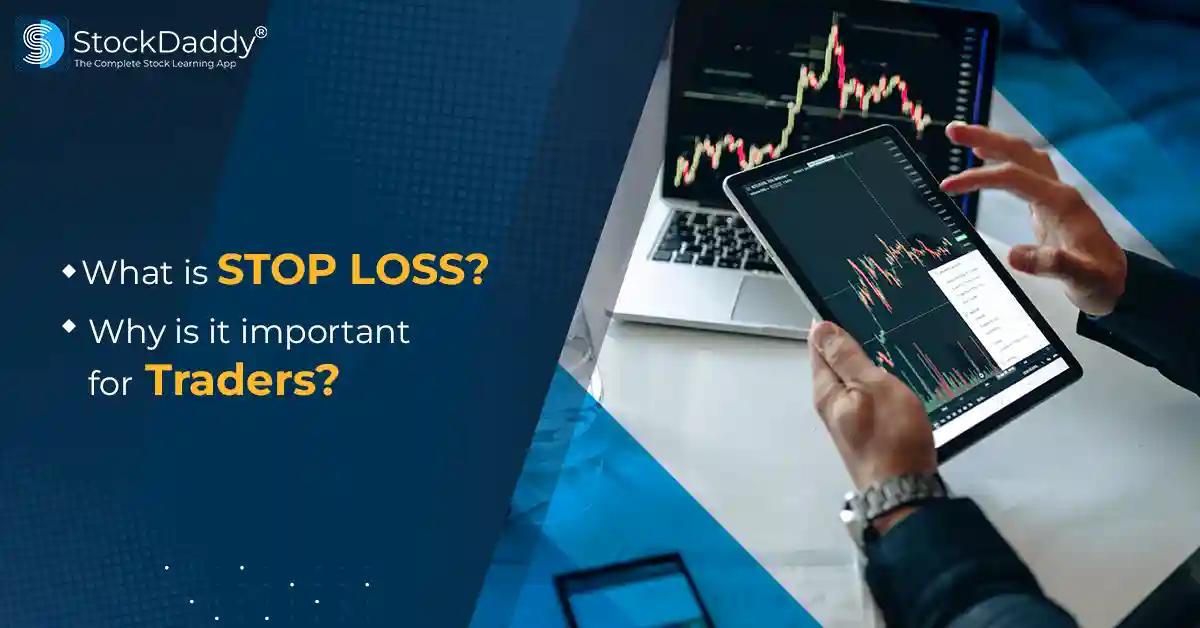Blog >
What is STOP LOSS? And why is it important for traders?
What is STOP LOSS? And why is it important for traders?

STOP LOSS means when you buy a stock, you set a level below the entry price where you will sell it, no matter how much the market falls. Stop loss in trading is a very powerful tool that is available for traders to limit their losses. It is an advance order that helps traders to sell their shares if the share price reaches a specific price. Thus, it helps in automating the sales process in various market scenarios.
After understanding the concept of stop-loss, let us also see why it is so important for a trader. You may have many questions in your mind like how does a stop-loss work? What is the best stop loss strategy? Types of Stop Loss. Above all, what are the benefits of a stop loss for a trader?
Stop-loss can be used for both short-term and for long-term trading also, but it is most effective for day traders who do intraday trading. Stop-loss is a very simple concept yet extremely powerful concept. It can protect you from major losses that can completely erode your capital to protect a large part of gains made (when used as protective stops). It is part of the capital saving strategy which protects your capital in trading.
How Does A Stop-loss Work?
A stop-loss order automatically closes a losing position once the price hits the predetermined level. The challenge lies in the right place to set a stop loss. It is basically a matter of determining a price level beyond which a trade is no longer valid. Identify the support levels by looking at a chart of your trade on screen. Find the lowest points for the stock and chart the previous points where it stopped falling. A break below this point would mean for the most part that there is a possibility that the stock could be a falling knife.
How to set stop loss?
- You can keep your stop loss price 8-10% below your purchase price, if you are positional trader depending on your risk appetite. This will limit your losses and you hold the stock till it loses value.
- This will help you in keeping your losses controllable and stop you from keeping the stock till it loses value. This knowledge protects your portfolio as well as minimizes your losses.
- Mainly it helps you to hold your position even when the market is bearish. You can also adjust your stops according to the movement of the shares and set a sell stop or sell stop limit just below the level where it stopped falling to prevent losses in the stock market.
Let's understand Stop-Loss with an example
Suppose you are an intraday trader and you buy Tata motors at market price or limit price which is 500 and you have a target of 530 rupees, but you are aware if it hits 490 rupees then it will go more downside so in this case you put stoploss of 10 rupees.
And if the trade goes against you. your stop loss will hit and you only have a loss of 10 rupees no matter how much the stock goes down, you close your trade at 490, this way you can minimize your loss according to your risk appetite.
Types of Stop Loss Orders
Stop Loss order are of three types:
1). Stop Market Order
A stop market order is a basic order type that issues a market order once a specified price is reached, known as a stop price. Once the stop price is touched or exceeded, the stop market order becomes a market order and will be executed at the best possible price. Keep in mind that in fast-moving markets, the best possible price can be very different than expected.
2). Stop Limit Order
A stop limit order is similar to a stop market order, except that when the stop price is touched or exceeded, a limit order is issued. This gives you more control over where the order will be executed but on the other hand, does not guarantee to be filled.
3). Trailing Stop
A trailing stop is a dynamic stop-loss order that "trails" behind the price if it moves in your favor. Trailing stops moves only in one direction. For example, once the trailing stop has moved up, it cannot go back down. In this way, trailing stops are not only to stop losses, but can be used to lock in profits for favorable trades.
We can say that stop-loss assures you of the amount of risk you are willing to take but hurts your expected return on the strategy you have devised. Therefore the primary objective of trading is to protect your capital. This is only possible in a measurable way using the concept of stop loss.
Learn Stock Market with StockDaddy

- Recent Blogs
- What is gold Bees ETF and How to invest in it?
- Difference Between Call and Put Option
- Types of Charts in Stock Market
- what is CPSE etf and How is it a good investment Opportunity
- What is Margin Trading Facility
- why Tata Motors Share is Falling?
- Disadvantages of SIP Investment You Should Know
- Can Stock Market make you Rich?
- Difference Between Sensex and Nifty
- Difference Between Fundamental Analysis and Technical Analysis